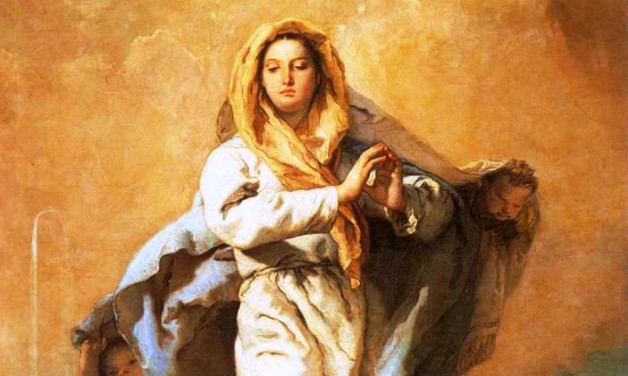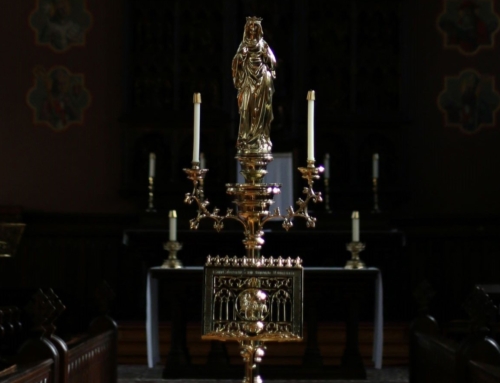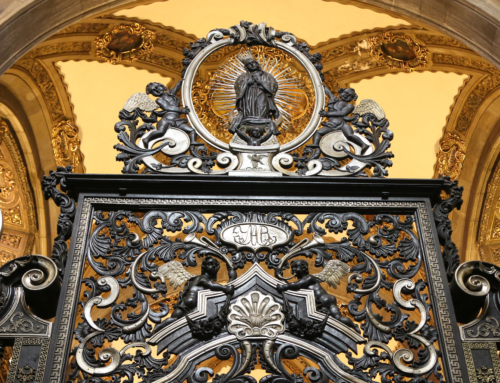Throughout this Easter season, one of the most commonly said prayers is the Regina caeli, a plea to Mary, the Mother of God, to rejoice in the Lord’s Resurrection. At our Dominican House of Studies, the prayer replaces both the Angelus, normally prayed at midday to commemorate the Annunciation (the moment at which God the Son took on human flesh), and the Salve Regina (which is our last prayer in the chapel each day). Even now, a month after Easter Sunday, Mary’s role in the mystery of the Resurrection pervades our prayer life. Even the Pope’s midday addresses to the crowds at St. Peter’s Square are called the Regina caeli speeches throughout the fifty days of Easter. Mary’s own assumption, by which she was caught up into Heaven, body and soul, at the end of her life on earth, shows that she has already participated fully in this mystery, having experienced her own resurrection. This raises a curious question, then: if Mary already has a glorified body in Heaven, and constantly looks upon the face of God, leaving nothing to be desired, why are we asking her to be happy?
One can imagine that Easter Sunday morning, how the first disciples to hear of Jesus’ Resurrection from the tomb and see his risen body must have rushed to Mary to tell her the news of great joy: as a hymn version of the prayer says, “Be joyful, Mary, heavenly queen/ Your Son who died was living seen.” Could that be the event that we recall with this frequent prayer?
While not recorded in Scripture, many writers within the tradition, such as St. Ignatius of Loyola, report that the risen Christ appeared to his mother before anyone else. (Fr. Romanus Cessario, O.P., relates this in his book The Seven Joys of Mary, whose title refers to a devotion that has taken many forms, including one, called the Franciscan Crown, that developed alongside the Rosary, and the Resurrection appearance is one of the mysteries.) If Jesus is the first to tell Mary about his Resurrection, by directly appearing to her, then the words of Regina caeli are his. That would cover the initial announcement, at least, but the rest would not seem to fit: it would be awkward for Christ to refer to himself in the third person, after all.
The context of the prayer, and the joy of the Blessed Virgin, therefore must extend beyond the historical event of Jesus’ Resurrection, as momentous as it was. Truly, hearing that her same Son—whom she raised and whom she watched as he was obedient unto death on the Cross—has been transformed to the new life of the glorified body is a cause for celebration! Yet each Christian believer also participates in Jesus’ death and resurrection, through Baptism. For as St. Paul reminds us, “Are you unaware that we who were baptized into Christ Jesus were baptized into his death? We were indeed buried with him through baptism into death, so that, just as Christ was raised from the dead by the glory of the Father, we too might live in newness of life” (Rom 6:3-4).
In addition to participating in Jesus’ Resurrection, which causes joy for us and for Mary, we also take part in being Mary’s children spiritually. As she who knew no pains in labor when she gave birth to Christ (St. Thomas Aquinas, ST III.35.6) became the mother of the Church through the pain of standing at the foot of the Cross, when Jesus gave her to his beloved disciple (John 19:27), Mary, the mother of all believers, spreads her Paschal joy to all her children. As Cessario says, “Mary’s unspeakable joy at the Resurrection of her Son catches on contagiously, and like the Easter fire spreads rapidly throughout the whole Church.” In asking Mary to rejoice, we ask all of the Church to exult as well.
Thus, every time that we recite or sing the Regina caeli, we share in the joy of the Mother of God and in the joy of the worldwide Church, a joy that flows from not only the Resurrection of Jesus, but also from each soul born of water and the Holy Spirit. And this rejoicing continues, and reaches its perfection, beyond this life. For just as the Dominican chant of the prayer switches from resurrexit (has risen) to jam ascendit (now ascends) at the upcoming feast of the Ascension, so Mary’s happiness, and ours, also stems from Jesus’ entry into the glory of the realm beyond this one, where we hope to follow both him and his mother, body and soul.
In this Easter season, and in Mary’s month of May, let us then ask the Queen of Heaven to “pray for us to God,” as the chant concludes, so that we may rejoice with her and her divine Son for all eternity.
✠
Image: Giovanni Battista Tiepolo, The Immaculate Conception







